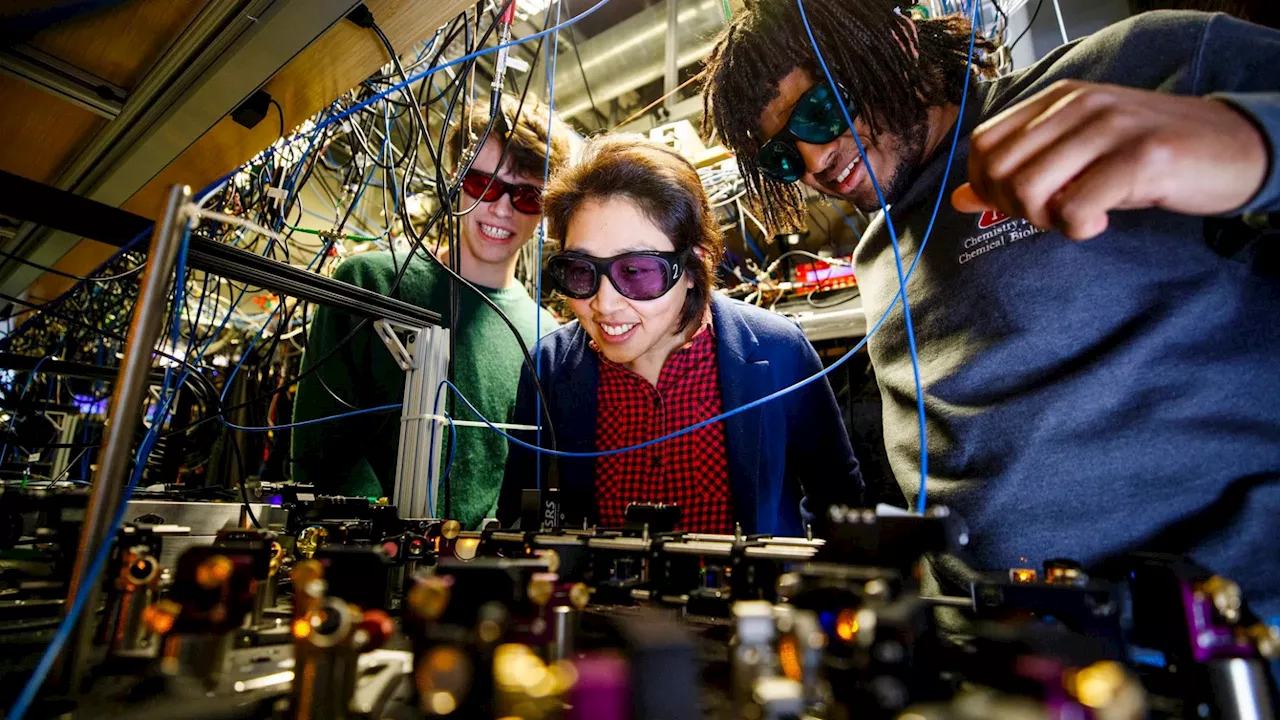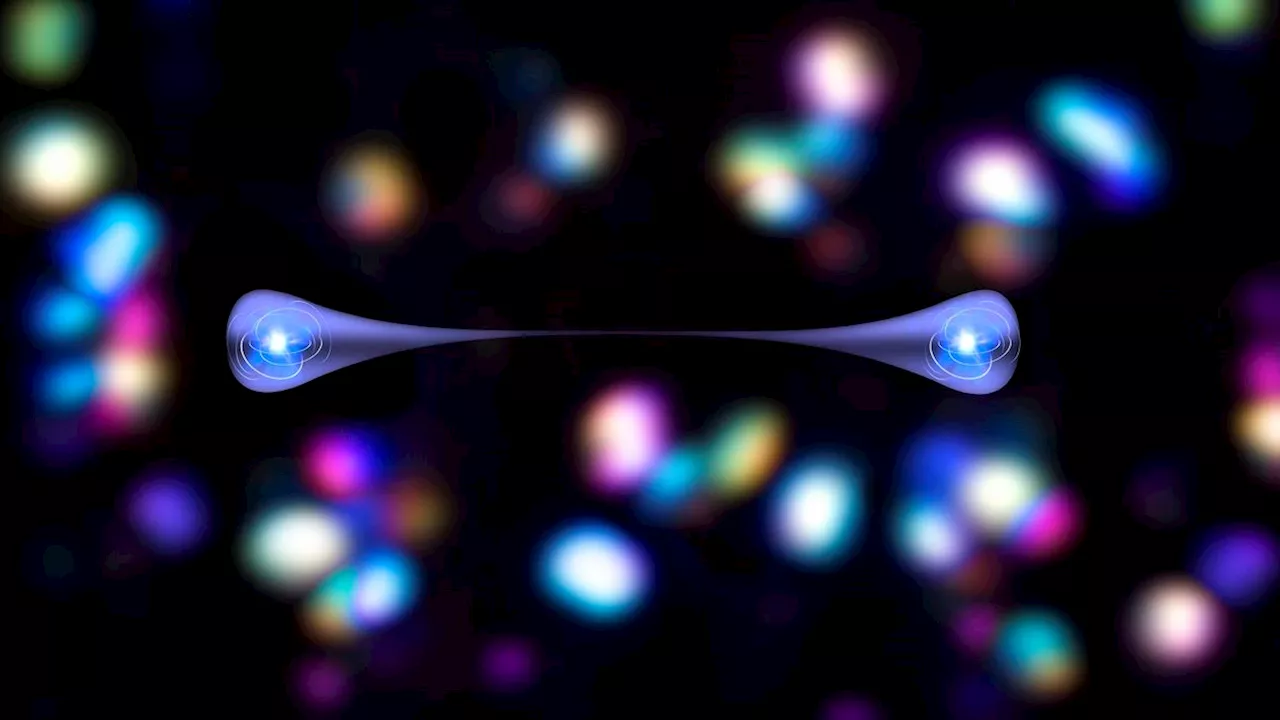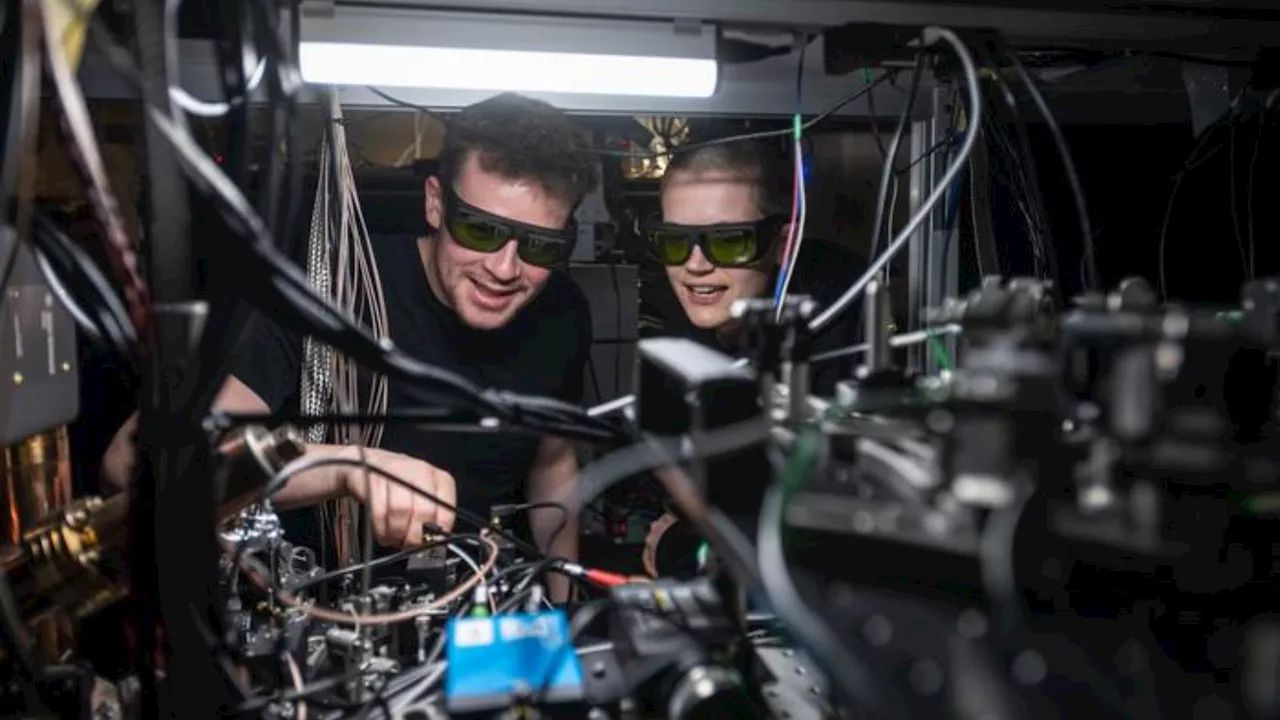A team of researchers at Oxford University Physics has made a significant breakthrough in quantum computing by successfully demonstrating the first-ever quantum teleportation of logical gates. This achievement paves the way for building larger, more powerful quantum computers and overcomes the scalability challenges that have long hindered their progress.
Researchers at Oxford University Physics have achieved a significant milestone in the development of quantum computing by successfully demonstrating the first-ever quantum teleportation of logical gates . This breakthrough paves the way for building larger, more powerful quantum computers, overcoming the scalability challenges that have long hindered their progress.
The research team connected two separate quantum computers through a photonic network, effectively creating a fully interconnected quantum computer. This architecture utilizes optical fibers to transmit data as photons instead of electrical signals, enabling the entanglement of qubits across multiple modules. Quantum computers, unlike traditional binary computers, leverage the principles of quantum mechanics to process information using qubits. Qubits can exist in multiple states simultaneously (superposition), allowing them to perform computations at speeds far surpassing even the most powerful supercomputers. This superior computational ability holds immense potential for revolutionizing various fields, including medical research, climate change modeling, and optimization problems across multiple industries. The scalability problem has been a major roadblock in realizing the full potential of quantum computing. Building a large quantum processor capable of handling millions of qubits simultaneously would require an enormous machine with equally extensive cryogenic cooling infrastructure. To address this challenge, the Oxford researchers proposed a scalable architecture where modules containing a small number of trapped ion qubits can be interconnected. The use of optical fibers for communication allows for the entanglement of qubits across these modules, effectively creating a larger, interconnected quantum computer. This approach overcomes the physical limitations of building a single massive quantum computer, enabling the gradual expansion and scaling of the system. The researchers demonstrated the effectiveness of their approach by successfully performing Grover’s search algorithm, which aims to find a specific item within a large, unstructured dataset. This experiment showcased the feasibility of network-distributed quantum information processing using current technology. The findings of this groundbreaking research were published in the prestigious journal Nature
Quantum Computing Quantum Teleportation Logical Gates Scalability Oxford University Physics
United States Latest News, United States Headlines
Similar News:You can also read news stories similar to this one that we have collected from other news sources.
 Researchers Achieve Quantum Teleportation with Error CorrectionA team of researchers has successfully demonstrated quantum teleportation with error correction using a trapped-ion quantum computer. This breakthrough utilizes entanglement and quantum error correction techniques to transfer quantum information reliably, overcoming the limitations of traditional methods.
Researchers Achieve Quantum Teleportation with Error CorrectionA team of researchers has successfully demonstrated quantum teleportation with error correction using a trapped-ion quantum computer. This breakthrough utilizes entanglement and quantum error correction techniques to transfer quantum information reliably, overcoming the limitations of traditional methods.
Read more »
 Scientists Achieve First-Ever Entanglement of Molecules, Opening New Doors for Quantum TechnologiesFor the first time, scientists at Durham University have successfully entangled molecules, a major breakthrough in quantum mechanics research with significant implications for future technologies.
Scientists Achieve First-Ever Entanglement of Molecules, Opening New Doors for Quantum TechnologiesFor the first time, scientists at Durham University have successfully entangled molecules, a major breakthrough in quantum mechanics research with significant implications for future technologies.
Read more »
 Record cold quantum refrigerator paves way for reliable quantum computersQuantum computers require extreme cooling to perform reliable calculations. One of the challenges preventing quantum computers from entering society is the difficulty of freezing the qubits to temperatures close to absolute zero.
Record cold quantum refrigerator paves way for reliable quantum computersQuantum computers require extreme cooling to perform reliable calculations. One of the challenges preventing quantum computers from entering society is the difficulty of freezing the qubits to temperatures close to absolute zero.
Read more »
 Harvard Scientists Trap Molecules for Quantum Operations, Ushering in a New Era of Quantum ComputingFor the first time, scientists have successfully trapped molecules and used them to perform quantum operations, marking a significant leap forward in the field of quantum computing. This breakthrough opens up new possibilities for building more powerful and versatile quantum computers.
Harvard Scientists Trap Molecules for Quantum Operations, Ushering in a New Era of Quantum ComputingFor the first time, scientists have successfully trapped molecules and used them to perform quantum operations, marking a significant leap forward in the field of quantum computing. This breakthrough opens up new possibilities for building more powerful and versatile quantum computers.
Read more »
 Scientists Discover New Quantum State in 2D Semiconductors, Paving the Way for More Powerful Quantum ComputingResearchers at the Daegu Gyeongbuk Institute of Science and Technology have made a significant breakthrough in quantum computing by discovering a new quantum state within two-dimensional (2D) semiconductor chips. This discovery offers a promising path for controlling quantum information with enhanced reliability, potentially leading to more powerful and efficient quantum computers.
Scientists Discover New Quantum State in 2D Semiconductors, Paving the Way for More Powerful Quantum ComputingResearchers at the Daegu Gyeongbuk Institute of Science and Technology have made a significant breakthrough in quantum computing by discovering a new quantum state within two-dimensional (2D) semiconductor chips. This discovery offers a promising path for controlling quantum information with enhanced reliability, potentially leading to more powerful and efficient quantum computers.
Read more »
 Researchers Achieve Breakthrough in Controlling Crystal Orientation of Photochromic MaterialsOsaka Metropolitan University scientists develop a novel method to pattern diarylethene crystals, paving the way for applications in semiconductors and pharmaceuticals.
Researchers Achieve Breakthrough in Controlling Crystal Orientation of Photochromic MaterialsOsaka Metropolitan University scientists develop a novel method to pattern diarylethene crystals, paving the way for applications in semiconductors and pharmaceuticals.
Read more »
